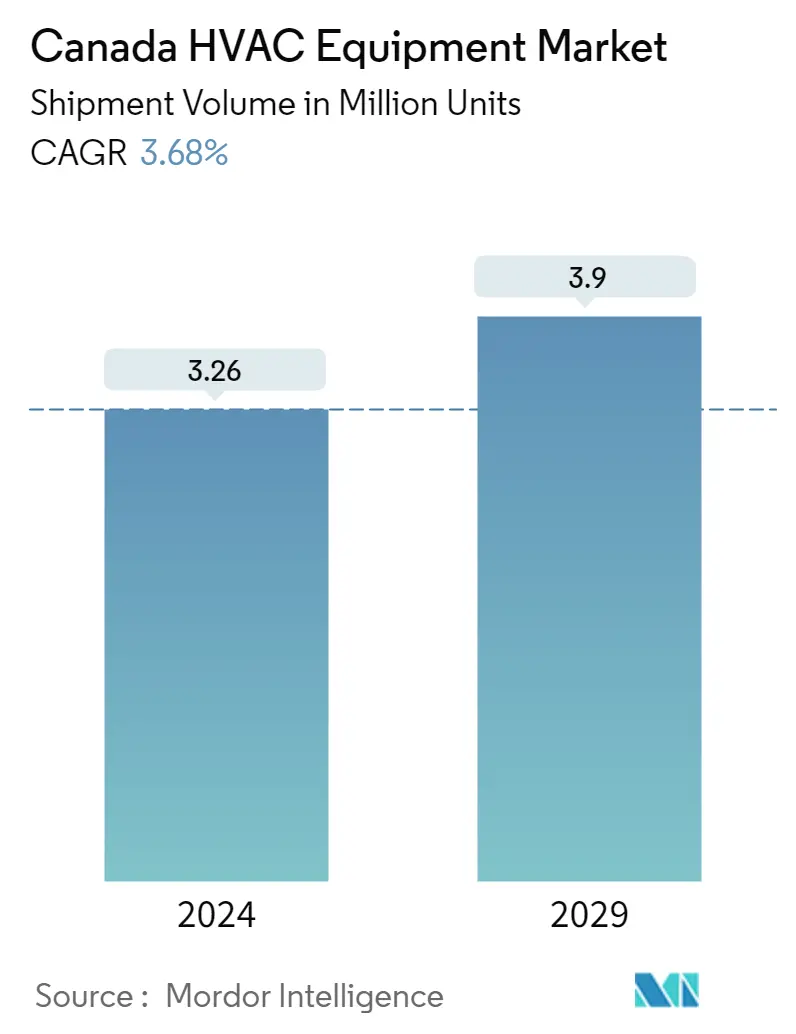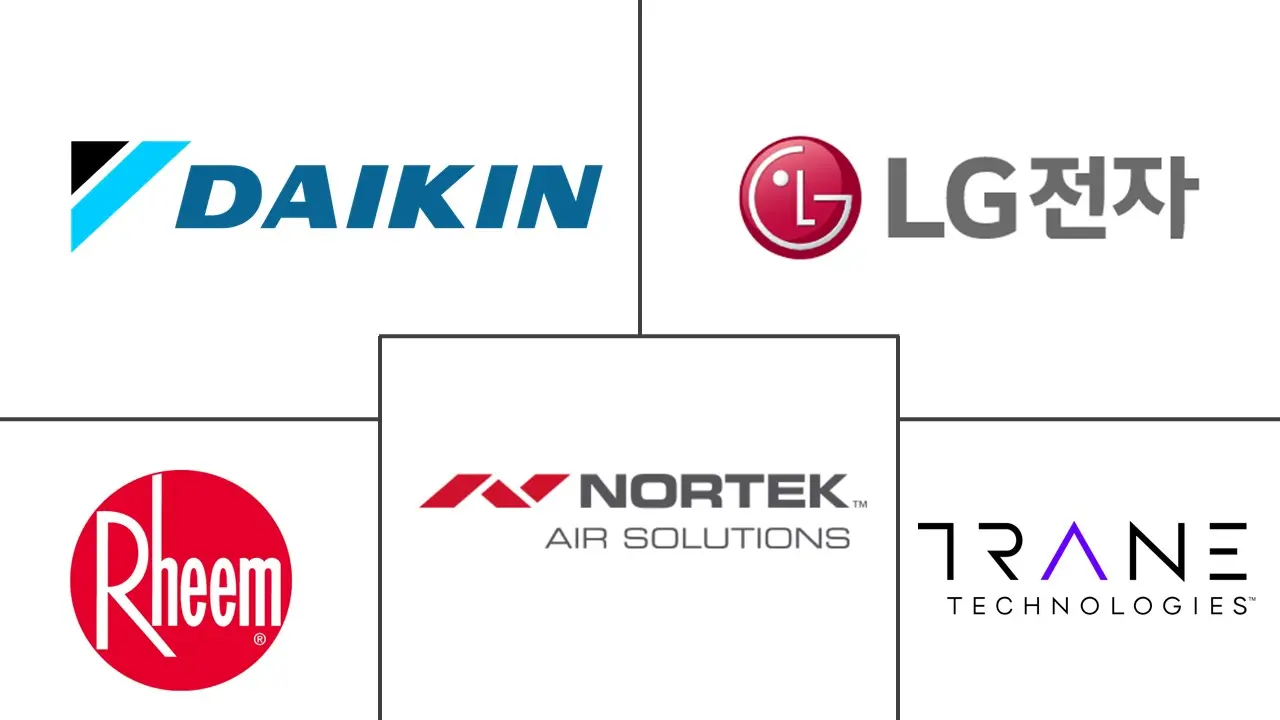Market Size of Canada HVAC Equipment Industry

| Study Period | 2019 - 2029 |
| Base Year For Estimation | 2023 |
| Market Volume (2024) | 3.26 Million units |
| Market Volume (2029) | 3.90 Million units |
| CAGR (2024 - 2029) | 3.68 % |
| Market Concentration | Low |
Major Players
*Disclaimer: Major Players sorted in no particular order |
Need a report that reflects how COVID-19 has impacted this market and its growth?
Canada HVAC Equipment Market Analysis
The Canada HVAC Equipment Market size in terms of shipment volume is expected to grow from 3.26 Million units in 2024 to 3.9 Million units by 2029, at a CAGR of 3.68% during the forecast period (2024-2029).
- Heating, ventilation, and air conditioning (HVAC) equipment are the systems for circulating air between indoor and outdoor areas and heating and cooling in residential and commercial buildings. These techniques also filter and clean indoor air and maintain humidity at optimal levels.
- The market sizing encompasses the number of units sold for the different types of heating, air conditioning, and ventilation systems across the residential and commercial sectors in Canada. The study also tracks the key market parameters, underlying growth influencers, and major vendors operating in the industry, which supports the market estimations and growth rates over the forecast period.
- The growth in construction activities, along with the rise in disposable income, increased the availability of HVAC equipment for a broader consumer base in the country. According to Statistics Canada, the total value of building permits in the country increased by 11.9 percent in August 2022 on a monthly basis, reaching USD 12.5 billion. Both the residential sector (+12.0 percent) and the non-residential sector (+11.8 percent) witnessed an increase in the value of building permits, with Ontario gaining the most permits. Particularly in the residential sector, the value of building permits in the multi-family component experienced a sharp increase of 22.2 percent.
- Further, in terms of heating equipment, though most Canadian households use forced-air heating systems to warm their homes, the demand for heat pumps, which are more energy-efficient than air furnaces, is expected to rise significantly in the coming years. This is driven by favorable government initiatives promoting heat pump adoption. Additionally, ventilation equipment, such as air handling units, is becoming popular as air pollution levels grow and people become more conscious of maintaining a healthy and safe atmosphere.
- Various companies have also been upgrading to new heating equipment in the market. For instance, in July 2022, the Canada Games Complex underwent a USD 3 million upgrade, which would include the replacement of the facility’s original boilers, along with improvements to energy efficiency and better accessibility for all. In line with the upgrade, the Federal Government covered approximately USD 2.3 million of the expected cost through its Green and Inclusive Community Building Program. Such initiatives by the companies in the market are expected to further fuel the demand for Heating Equipment during the forecast period.
- Manufacturers are facing many efficiency requirements and changes to refrigerants that are primarily driven by the U.S. Dept. of Energy (DOE), which in turn has a significant impact on the market in Canada. New DOE energy efficiency standards for 2023 are expected to significantly impact all rooftop units sold in Canada.
- The filters, coils, fins, etc., of an HVAC system, such as an air conditioner, require regular maintenance for the equipment to work efficiently and effectively throughout its operating life. Neglecting necessary maintenance will definitely reduce air conditioning performance and a significant increase in energy consumption.
- Additionally, the ongoing conflict between Russia and Ukraine is expected to impact the electronics industry significantly. The conflict might cause extra disruptions and affect the supply chains of semiconductors, leading to further increases in the prices of electronics. Overall, the impact of the conflict on the electronics industry is expected to be significant. This would hamper the production of HVAC equipment.
